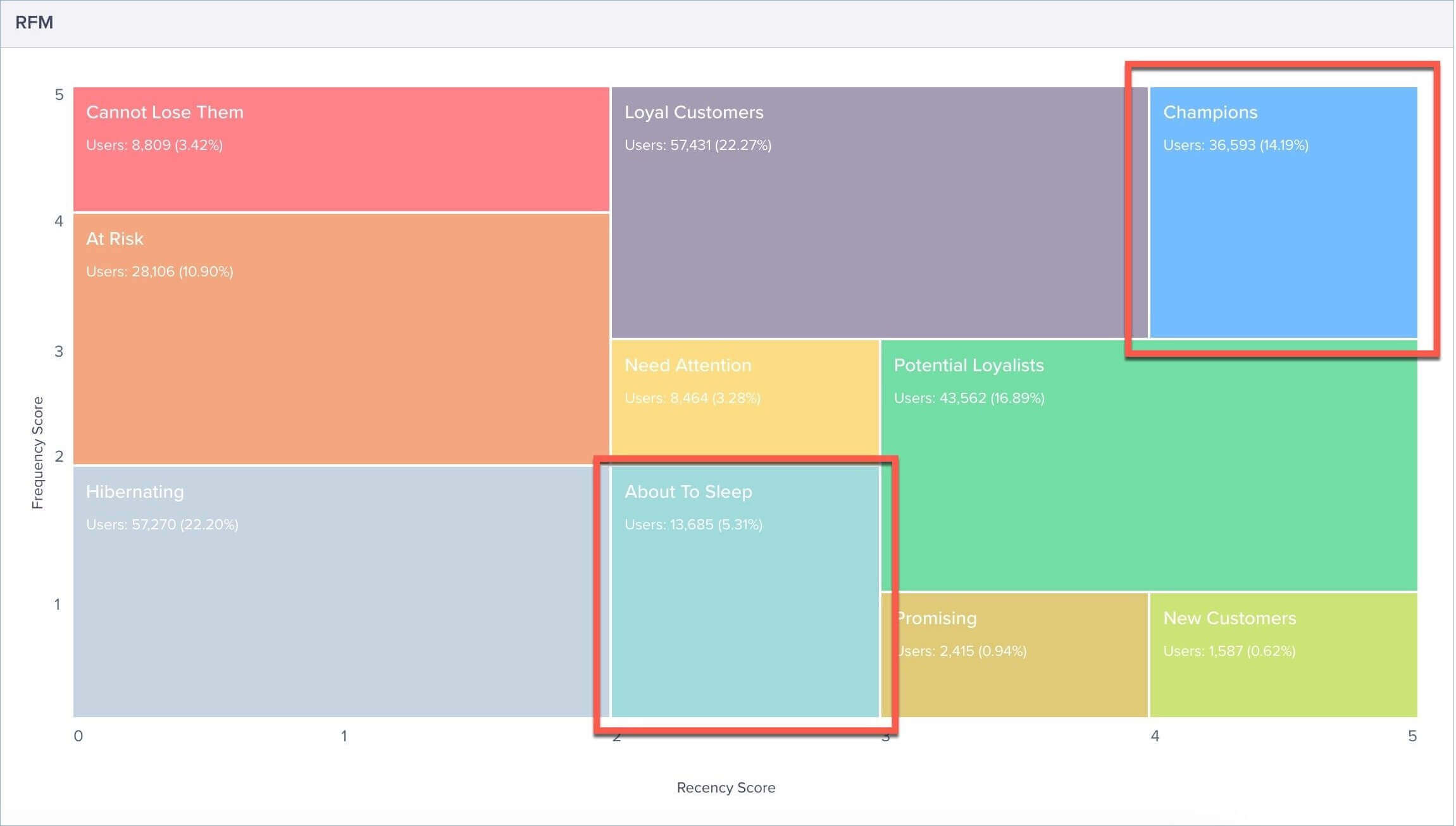Learn how you can Unlock Limitless Customer Lifetime Value with CleverTap’s All-in-One Customer Engagement Platform.

User segmentation is the backbone of targeted marketing in the digital age. Its capacity to generate insights into customer preferences, behaviors, pain points, and desires is unmatched.
The practice works by categorizing segments of your company’s customer base into distinct groups. These distinctions can be based on characteristics such as behaviors, demographics, product use, or preferences. Once divided, the segments form the basis for your audience personas, which marketers can then use to boost engagement and conversions with personalization.
There’s no one right way to divide and group your users. So let’s explore a few different user segmentation strategies.
When you’re dealing with a broad customer base, it can be difficult to determine who’s in an audience. This lack of information makes it impossible to know how to best segment them.

In-app surveys are a goldmine for segmentation data.
Leveraging in-app surveys on your mobile app is an excellent way to start. You get immediate feedback as users interact with the in-app features. Survey creators can tailor the questions to gather information on an individual’s race, gender, or income level. They can then create segments based on these and other user demographics.
The survey can also target psychographic information, such as a respondent’s values, beliefs, or interests. These can even figure out a user’s satisfaction with features like in-app purchases. Furthermore, the survey can gather technographic information regarding which devices the customer uses to interact with your brand.
Regardless of what information your survey gathers, you can use it to determine which groups comprise a customer base. Then, further segment them based on what they have in common and where they differ.
Push notifications — those pop-up messages that appear on your phone screen — are highly impactful user segmentation tools. In fact, they’re particularly effective at gathering behavioral data on customers.
For instance, if a push notification highlights a specific product or feature, the segment of the audience that engages with the message is differentiating themselves through their behavior. Or, in other words, they’re demonstrating a specific interest that you can use to curate future messaging and product offerings.

A user who clicks on this push notification segments him or herself as an active user interested in high-end office furniture.
Then, marketing teams can tailor the next push notification to capture the attention of specific user segments and can iterate on the results in a process of continuous improvement.
Explore in Depth: Understanding Behavioral Segmentation in Marketing with Examples & Strategies
The data generated through individuals’ in-app behavior is some of the most valuable information available when it comes to user segmentation. The way a customer navigates and interacts with in-app features carries a wealth of information regarding their interests. Plus, when cross-referenced with demographic data, this behavioral information can reveal how usable and accessible the app is to certain portions of your customer base.
Alternatively, you can measure and track key performance indicators (KPIs) such as customer lifetime value, churn rates, and specific segment growth through analytics. Using this information, the overall app performance can be tailored to fit the users, resulting in a notable performance boost.
At scale, effective user segmentation requires analyzing vast amounts of data. It’s a process that can be excessively costly, error-prone, and time-consuming. That is, until you introduce artificial intelligence (AI) tools. Mobile apps can integrate AI tools to comb through behavioral, demographic, technographic, and psychographic information to identify relevant audience segments.
On the CleverTap platform, our AI tools use RFM analysis to automatically segment users into 10 groups, ranging from the “champions” on the top end to the “hibernating” on the inactive end. But the real secret sauce lies in re-engaging the segments called “cannot lose them” (users who were active at one point but haven’t been back recently) and “at risk” (those who once used your app with above-average frequency but don’t anymore).

RFM analysis helps you find your at-risk customers so you can market to them accordingly.
This type of segmentation allows you to hyper-personalize your engagement efforts while cutting down on the costs associated with conducting segmentation.
Read More: What is Psychographic Segmentation? The Complete Guide!
While A/B testing isn’t a method for segmenting audience groups, it’s a fundamental strategy for creating personalized messages. This comes into play once customers have already been split into segments.
User segmentation and A/B testing are two powerful techniques in the realm of data-driven marketing and website optimization. While they serve distinct purposes, they can be intricately intertwined to enhance the user journey and drive better results.
Instead of just running A/B tests on an entire user base, marketers can strategically target specific segments. For example, you might find that a “Youthful Shoppers” segment prefers a vibrant and image-heavy product page, while “Frugal Shoppers” prefer a more straightforward and detail-oriented layout.
This testing can go through an iterative process to discover preferences for everything from communication mediums to color choices. Essentially, A/B testing is where user segmentation is put to practical use to generate more customer conversions and engagement through tested personalization.
There are many different ways to go about user segmentation. But regardless of which strategy you leverage for your app, segmentation generates key insights that enable you to better personalize your messaging. This ability is invaluable.
That said, the first and most fundamental step is to obtain a digital tool capable of orchestrating advanced user segmentation strategies. There are plenty of these tools on the market, but they’re not all equal.
CleverTap is the leading all-in-one customer engagement platform. Our advanced features empower companies to improve customer lifetime value and retain more of their existing users. Contact us today to learn more and schedule a free personalized demo.

The User Segmentation Pocket Guide